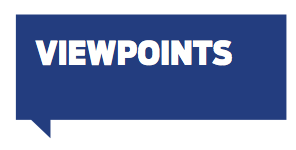Rising interest rates often cause homebuyers to think twice about moving forward with a mortgage. In April, mortgage applications fell more than 7% after 30-year fixed mortgage rates reached a high for the month.
 But even if interest rates begin to climb, that doesn’t mean lenders are out of luck when it comes to boosting mortgage applications.
But even if interest rates begin to climb, that doesn’t mean lenders are out of luck when it comes to boosting mortgage applications.
From digitizing the lending process to incorporating expanded financial data, there are several ways in which lenders can set the stage for an increase in mortgage applications.
Go digital
While every segment of consumers deserves attention, lenders would be wise to cater especially closely to the needs and preferences of millennials. Already the largest generation in the U.S. workforce, Millennials will soon wield $1.4 trillion in annual purchasing power.
One way lenders can capture the interest of this burgeoning generation of homebuyers is by taking the mortgage application process online.
Known for leveraging technology more than almost any other generation, Millennials are prime candidates for digital mortgage applications. In fact, 70% of millennial homeowners have already used an online application process for their last mortgage.
An important step in digitizing the lending process and ultimately attracting additional mortgage applications from Millennials is considering opportunities for improvement.
If, for example, there are stages in the lending process where loan officers are kept waiting for necessary data or information – such as verifying assets or income – digitization can help expedite the process. Similarly, a point in the process that’s prone to inaccuracies or fraud may benefit from a digital approach. Rather than relying upon manual data entry or extraction, loan officers will enjoy a more efficient digital lending experience.
To ensure a successful transition from a paper-based process to a more robust digital experience, only partners who have a track record with major lenders should be considered.
This prior experience can help eliminate potential problems early on and ultimately increase the chances of a smooth shift to online mortgage applications. Lenders should also narrow down their options to partners who have a roadmap for further innovation – not to mention the network needed to turn their vision into reality moving forward. Continuing to improve upon the lending process will give Millennials fewer reasons to look elsewhere for a loan.
Incorporate expanded financial data
When considering a consumer’s ability to pay off a mortgage, lenders typically turn to a credit score. That’s a problem for the 45 million Americans who don’t have one. Unable to secure a loan, consumers who are either credit invisible or lack a sufficient history often have no choice but to bypass big-ticket purchases such as cars and homes.
However, with expanded financial data, that soon may change.
One promising development is the inclusion of consumer-permissioned data within the credit scoring process. A variety of expanded data points – such as cell phone bills and utility payments in the case of Experian Boost and deposit account data when it comes to UltraFICO – could help open up access to loans at some point in the future.
Millions of consumers who previously struggled to qualify for a loan could have the opportunity to showcase their financial well-being through new sources of data.
In the meantime, lenders can try to take advantage of digital verifications that help simplify the lending process.
There’s no need to waste weeks, if not months, clearing a potential borrower manually who is willing to offer up information about their assets or income digitally.
Use online verification technologies to conveniently speed things up while also improving accuracy.
Make it mobile
There’s an app for just about everything – and home buying is no exception. According to a 2018 study by the National Association of Realtors, 73% of buyers use a mobile device to search for a home.Lenders looking to open the door for additional mortgage applications should think about developing or leveraging a mobile app that enables consumers to start and end their search in one location. Considering how many homebuyers already leverage mobile apps during their search, chances are a good number would be willing to complete the process within the same app.
To ensure consumers are comfortable using an app during their home purchase, lenders need to speed things up. Among consumers who’ve stopped working with a brand due to a slow app, roughly 70% said they won’t accept more than six seconds of load time.
Yet another crucial factor worth considering is security. One out of four mobile apps have at least one high risk security flaw.
One such example of a lending app that’s fast, secure and also easy to use is Quicken’s Rocket Mortgage.
But before developing a mobile app with industry leaders like Rocket Mortgage in mind, lenders should consider the capabilities of their internal team or look for the right partners.
After all, there’s little margin for error when it comes to creating or choosing a mobile app.
One out of five users will abandon a mobile app that’s not up to par after just one use.
Lenders that accurately assess how much help may be needed from an outside partner stand to increase their chances of implementing a top-notch mobile app on the first try.
Create a culture
From a digitized lending process to a newly minted mobile app, technical implementations are just the first step to driving extra business.
Lenders that complement technology with a culture focused on digital innovation promise to usher in additional mortgage applications.
Through a clear vision on the empowerment that digitization will bring to the team along with education for borrowers that may not understand when or how to engage with an online lending experience, lenders can create a culture that embraces and fully leverages a digital experience.
Despite rising interest rates, additional mortgage applications are well within reach. Lenders have the opportunity to bring in more business by implementing technical innovations such as a mobile app and establishing a culture in which digitized lending is recognized and appreciated.





